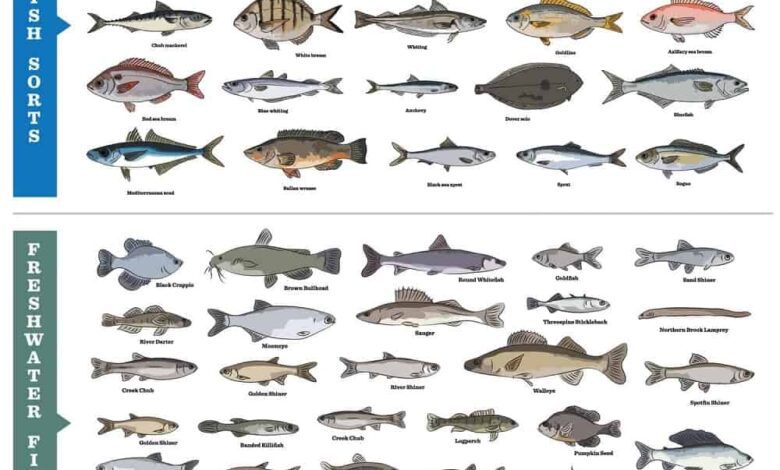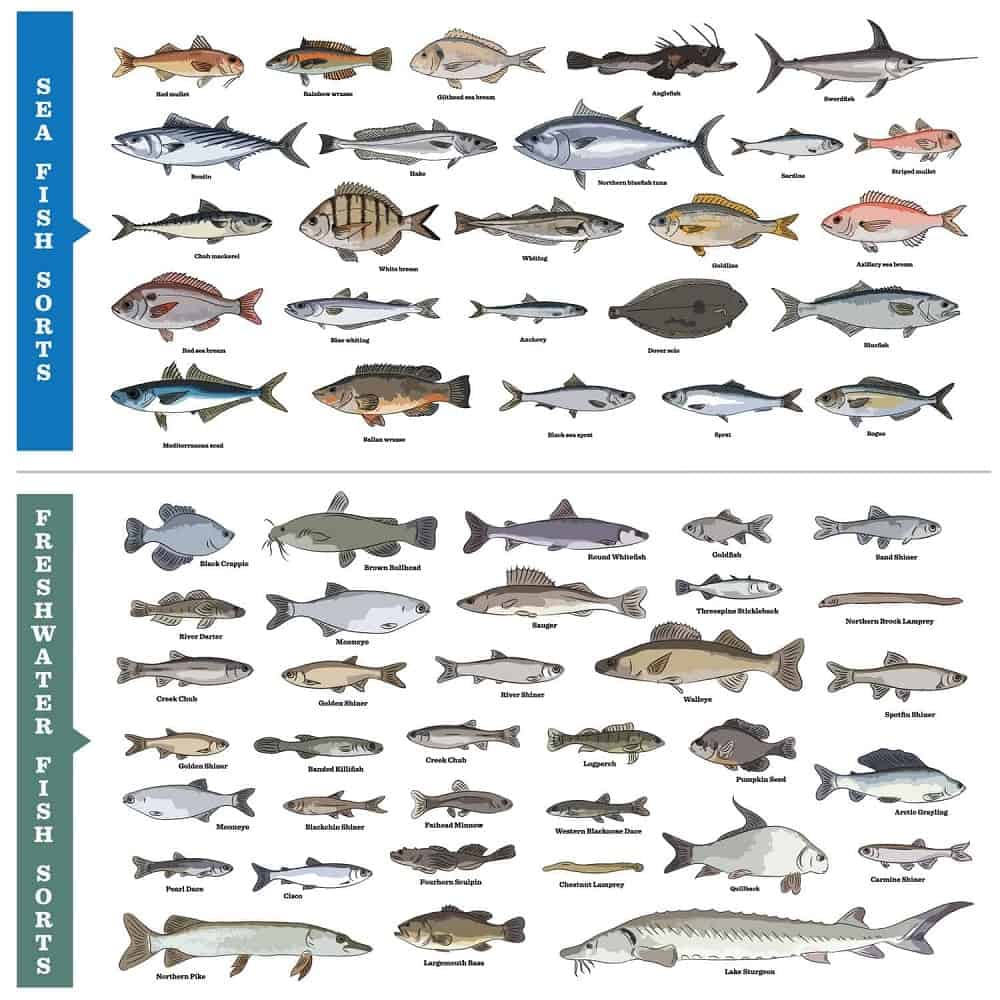
types of fish
So you’ve been to the local pet store and you’ve noticed that the keep their fish divided into several sections.
Why do they do this, you wonder? We’ll take you through the basics of what these fish are and why they are not kept together in the same tanks.
First of all, for our basic purposes there are four categories of fish. Without getting too technical or using the actual scientific names,
beginners would be wise to think of the four groups as: marine or salt-water fish, goldfish, community fish, and cichlids. We’ll go through each group and give you an outline of what you can expect with each type of fish.
The marine fish are obviously the most beautiful of the bunch, brightly colored and sometimes bizarrely shaped, salt-water fish are almost everyone’s favorite.
Despite this though, we absolutely do NOT recommend them for a first time fish owner. Marine fish have very specialized water needs,
and if the aquarist is also interested in the corals and anemones that generally go along with a marine tank, special (and expensive) lighting and chemicals will also be required.
Our advice is that you start with a freshwater tank and learn your way around the basics of the hobby before attempting the more complex and expensive marine tank!
The next group that we’ll examine is the easiest group of fish to keep– goldfish. These fish can tolerate a wide range of temperatures and water conditions.
Indeed, with these fish, you’ll not even require a heater for your tank unless your house is unusually cold. In addition, these fish are extremely good neighbors, showing almost zero aggression towards one another.
What’s their downside, you ask? Well, they produce a huge amount of waste. In fact, they produce so much waste that the ammonia
produced will actually kill other types of fish that are kept in the tank with them, unless your tank is either quite large or you are doing frequent water changes. Your best bet though is to not mix goldfish with anything else.
The next easiest group of fish to keep is the community fish. Mollies, barbs, tetras, danios, corydoras, livebearers and loaches are all widely available types of community fish.
Most of these fish stay small and show little aggression towards one another. Many of them tend to school and present quite an impressive sight in a home aquarium. They are cheap and easy to cheap and are the first choice for most beginners.
On the downside, you will have to have a heater in your tank as these are a warm water fish and require a fairly constantly temperature.
Also, many aquarists feel that community fish don’t seem to have much of a personality. The fact that they do remain so small and have placid temperaments may not appeal to you.

This brings us to the most challenging freshwater fish, the cichlid. While many of these warm water fish have beautiful colorations that rival even the marine fish,
they are generally bad tempered and aggressive toward one another, not to mention deadly towards any non-cichlids in the tank, especially if they are spawning.
And in truth, that’s the main reason why they are so popular. Cichlids interact with one another and with their keeper in a way that most fish do not.
Adult cichlids are generally very territorial, tending to “claim” areas within the tank. Every cichlid tank has a “pecking order”, and each fish within the tank knows his place within that order– with the smaller and weaker fish fleeing from the bigger fish.
And while this generally provides the fish owner with hours of amusement, it also requires the hobbyists to monitor their tanks for signs that the cichlid’s normal aggression is leading to the fish actually killing one another.
All long time cichlid owners will tell tales of having to get rid of fish because they became too violent or unmanageable; it goes with the territory of owning cichlids.
Whatever type of fish that you choose to purchase, you should do your reading on that fish BEFORE you buy them.
Never wait until you’ve brought home your new fish to do your research. Find out how your chosen fish will behave, how big it is going to get,
and what its water and food requirements are before you bring it home. You and your fish will both be happier if you do this.
a fish,fish,fish names,types of animals,edible fish,catfish,animals,types of ornamental fish,


